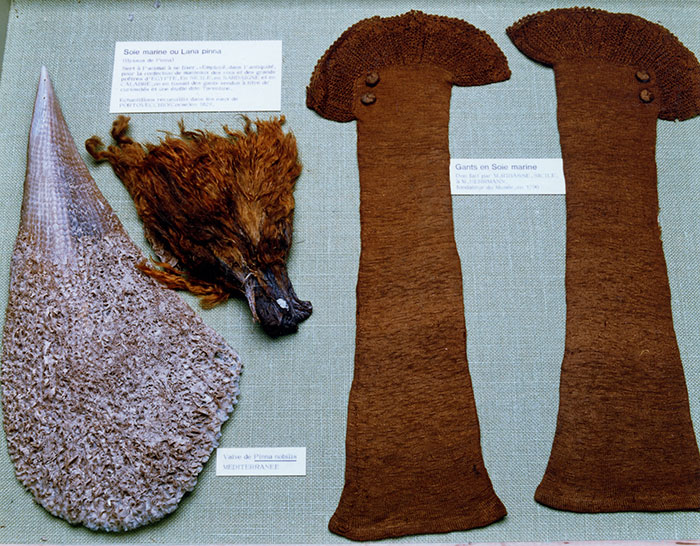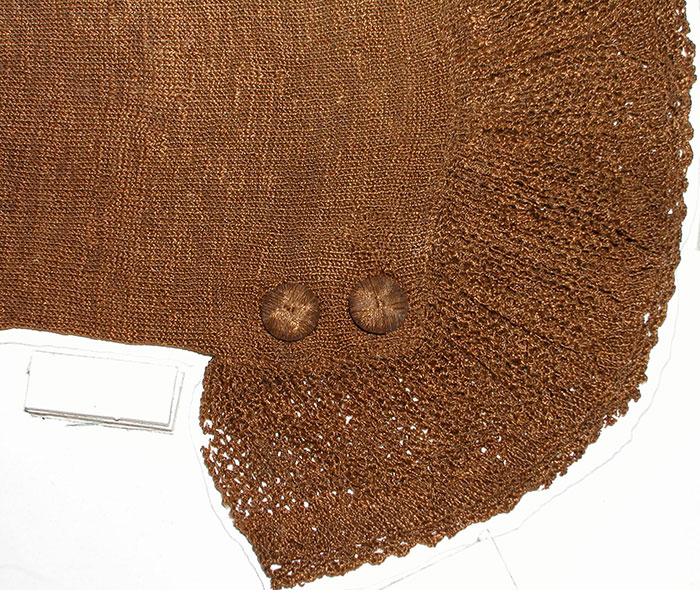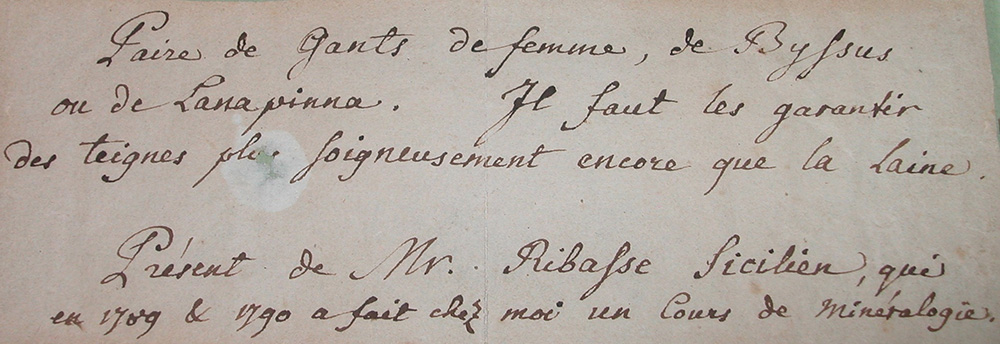Pair of gauntlets, 18th c.
Pair of gauntlets, elbow length, end of 18th century, origin unknown. F-Strasbourg, Musée Zoologique de la Ville de Strasbourg (MS Inventory 7).
Sea silk, plain right knit, 8 stitches/cm, with seam, flounce in hole pattern at the wrist, perforated ending; 2 buttons each, covered with the same material, ending with cover, length 36 cm, edge 11 cm, flounce 4 cm.
Original label in handwriting of J. Hermann : “Paires de gants de femme, de Byssus ou de Lana pinna. Il faut les garantir des teignes plus soigneusement encore que la laine. Présent de Mr. Ribasse, Sicilien, qui en 1789 et 1790 a fait chez moi un Cours de Minéralogie.”
Printed display case label: “Gants tissés en soie marine, offerts à Jean Hermann en 1790 par M. Ribasse de Sicile.”
In 1789/90 the Sicilian M. Ribasse attended a mineralogy course by J. Hermann at the University of Strasbourg (1738-1800), owner of a scientific cabinet. After the death of J. Hermann, the cabinet went to the Zoological Museum, which was founded in 1890.
The gauntlets are displayed in a showcase together with a fan shell and several fibre beards glued together: a classic way of presenting objects made of sea silk in natural history collections, and still is. More about this in the chapter Historical aspects → Modern times → Curiosity cabinets.
The Grande encyclopédie: Inventaire raisonnée des sciences, des lettres et des arts from 1886-1902, mentions these gauntlets: “M.Th. Barrois rapporte qu’on peut voir au musée de Strasbourg une paire de gants tissés avec le byssus de la Pinna nobilis.del Museo oceanografico di Monaco.” (Zanetti 1964)



